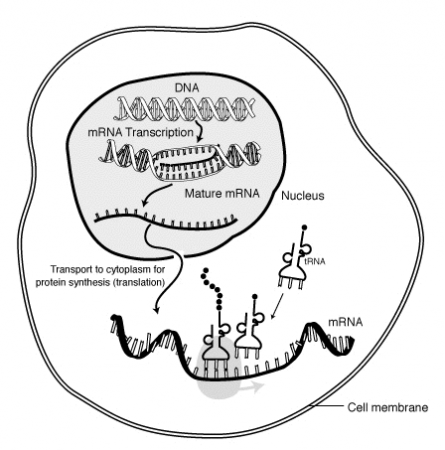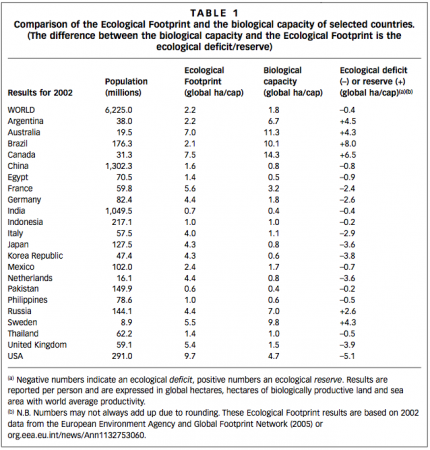From PBS’s DNA The Secret of Life.
Category: Natural World
The Digestive System
In his critique of research on the beneficial-bacteria storing role of the appendix, PZ Myers includes an excellent overview of the digestive system.
When you eat something, it first goes into the stomach, where it’s treated to an acid bath, some enzymes, and a lot of muscular churning to break it up. Then it’s squirted into the small intestine, where the acids are first neutralized and more enzymes are tossed onto the watery, mushy soup that the food has been rendered down into, called chyme. The primary job of the small intestine is to suck all the nutrients out of the chyme and pass them on to the circulatory system.
Once as much of the good stuff has been leeched out of the chyme as your system can do, the soup is passed on to the large intestine …. This stuff is still very watery — if you’ve ever experienced diarrhea, that’s what it is at this point. The primary job of the large intestine is to resorb water from the waste, condensing it down into the thick, pasty glop we all know and love as excrement. The large intestine is basically the sewage treatment plant here.
— Meyers, 2009: Evolution of the appendix? in ScienceBlogs.
“Junk” DNA: Not so much
It has always strained credibility that the 98% of our DNA not used to code proteins would be useless. But this non-coding DNA picked up the name “junk DNA” because no-one quite knew what it did. In fact, one study (Nóbrega, 2004) found that deleting large chunks of DNA had no discernible effect on mice; the mice born without these pieces of non-coding DNA were viable.
However, a slew of papers from the Encode project indicate that the part of our genome formerly known as junk DNA, regulates the 2% that does the protein coding:
The researchers … have identified more than 10,000 new “genes” that code for components that control how the more familiar protein-coding genes work. Up to 18% of our DNA sequence is involved in regulating the less than 2% of the DNA that codes for proteins. In total, Encode scientists say, about 80% of the DNA sequence can be assigned some sort of biochemical function.
— Jha (2012): Breakthrough study overturns theory of ‘junk DNA’ in genome in The Guardian.
This is more good news for useless bits of biology (see the appendix).

The Appendix: A Useless bit of Biology? Perhaps Not
The appendix has long been supposed to be a vestigial, useless organ. But a 2007 study suggests that it might have had — and may still have in many developing countries — an important role in digestion. It may provide a refuge for helpful, commensal bacteria to repopulate our guts after we purge when we get sick (Bollinger et al., 2007):

… the human appendix is well suited as a “safe house” for commensal bacteria, providing support for bacterial growth and potentially facilitating re-inoculation of the colon in the event that the contents of the intestinal tract are purged following exposure to a pathogen.
— Bollinger et al., 2007: Biofilms in the large bowel suggest an apparent function of the human vermiform appendix in the Journal of Theoretical Biology.
Why do they think that? What’s the evidence?
The shape of the appendix is perfectly suited as a sanctuary for bacteria: Its narrow opening prevents an influx of the intestinal contents, and it’s situated inaccessibly outside the main flow of the fecal stream.
–Glausiusz (2008): And Here’s Why You Have an Appendix in Discover Magazine.
And thinking about supposedly useless bits of biology, there’s a bunch of interesting papers coming out about so-called “junk” DNA.
Online Lab Saftey Course
Flinn Scientific — one of our sources of laboratory chemicals — has free online chemical safety courses for middle and high school teachers.

Water Scarcity in Yemen
Groundwater tends to be a common property resource. In places like Yemen, where ownership rights are not clearly defined it tends to be overexploited. So much so, that they’re looking at running out within the next 10 years. Peter Salisbury has an article in Foreign Policy.
Most potable water in Yemen is produced from a series of deep underground aquifers using electric and diesel-powered pumps. Some of these pumps are run by the government, but many more are run by private companies, most of them unlicensed and unregulated. Because of this, it is nigh on impossible to control the volume of water produced. By some (conservative) estimates, about 250 million cubic meters of water are produced from the Sanaa basin every year, 80 percent of which is non-renewable. In recent years, the businessmen who produce the water have had to drill ever-deeper wells and use increasingly powerful pumps to get the region’s dwindling water reserves out of the ground.
–Salisbury (2012): Yemen’s water woes in Foreign Policy.
Ecological Footprints: If the World Lived Like …
What if the entire world population lived like the people in Bangladesh? The amount of land to produce the resources we’d need would take up most of Asia and some of Africa. On the other hand, if we lived like the people in the UAE we’d need 5.4 Earths to support us sustainably. That’s the result of Mathis Wackernagel’s work (Wackernagel, 2006) comparing resource availability to resource demand. Tim De Chant put this data into graphical form:

I showed this image in Environmental Science class today when we talked about ecological footprints, as well as the one showing how much space the world population of seven billion would take up if everyone lived in one big city with the same density of a few different cities (Paris, New York, Houston etc.).
Wacknagel’s original article also includes this useful table of data for different countries that I think I’ll try to get a student to put into bar graph for a project or presentation.

A Darwinian Debt
Evidence is mounting that fish populations won’t necessarily recover even if overfishing stops. Fishing may be such a powerful evolutionary force that we are running up a Darwinian debt for future generations.
— Loder (2006), Point of No Return in Conservation in Practice.
Darwinian Debt. That’s the elegant phrase Natasha Loder (2006) uses to describe the observation that human pressure on the environment — fishing in this particular example — has forced evolutionary changes that are not soon reversed.
Fishermen prefer to catch larger fish, depleting the population of older fish, and allowing smaller fish to successfully reproduce. Over a period of years this artificial selection — as opposed to natural selection — gives rise to new generations of fish that are permanently smaller than they used to be. And the fisheries find it hard to recover even after decades (Swain, 2007):
Populations where large fish were selectively harvested (as in most fisheries) displayed substantial declines in fecundity, egg volume, larval size at hatch, larval viability, larval growth rates, food consumption rate and conversion efficiency, vertebral number, and willingness to forage. These genetically based changes in numerous traits generally reduce the capacity for population recovery.
— Walsh et al., 2005, Maladaptive changes in multiple traits caused by fishing: impediments to population recovery in Ecology Letters.